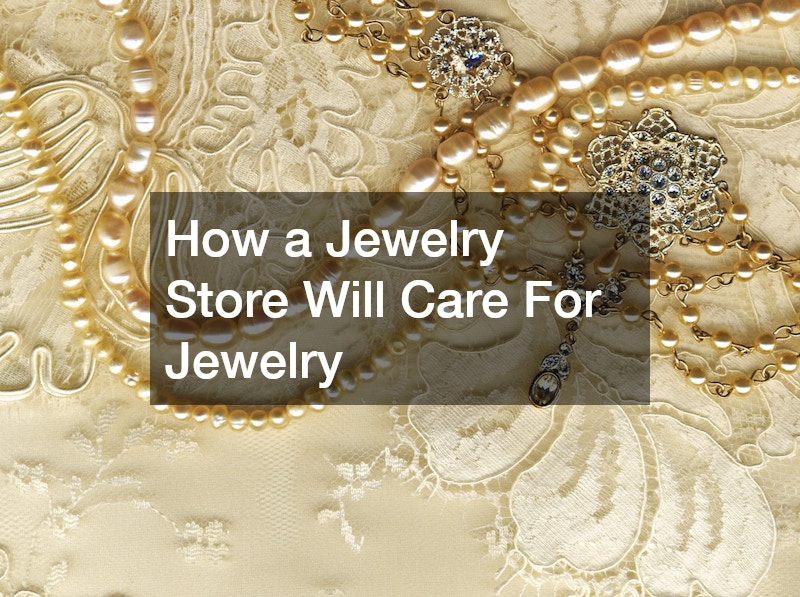
In this article, we will explore how jewelry stores professionally care for various types of jewelry, ensuring they maintain their beauty and longevity. Understanding these practices can help jewelry owners better manage their own pieces and maximize their lifespan. Below, we'll address some of the most common questions people have about how jewelry stores handle their important collections.
Video Source
Jewelry stores often utilize ultrasonic cleaning, a method that uses high-frequency sound waves to agitate a cleaning solution, effectively removing dirt from intricate areas of the piece. This technique is particularly useful for sturdy gems like diamonds but might not be suitable for more fragile stones. Alongside ultrasonic cleaning, steam cleaning is employed to treat metals and gemstones, which involves the use of high-temperature steam to loosen and dissolve debris. When dealing with delicate pieces, manual polishing is preferred, where jewelers meticulously clean items using specialized brushes and polishing cloths.
In cases where ultrasonic cleaning is not advisable, steam cleaning offers a gentler alternative that still effectively renews the sparkle of jewelry without causing harm. Jewelry professionals assess the materials and quality of each piece before choosing the most appropriate cleaning method to ensure safe handling. Manual polishing, although time-consuming, provides a controlled cleaning approach that avoids potential risks associated with automated processes.
Jewelry stores implement a variety of protective treatments to enhance the durability of jewelry against daily wear and environmental exposure. Anti-tarnish coatings are frequently applied to metals like silver, which are prone to oxidation when in contact with air and moisture. For white gold pieces, rhodium plating is a standard procedure that provides a protective layer, enhancing the metal's luster and providing a barrier against scratches. In addition to metal treatments, gemstone sealing is used to protect porous stones like opals and emeralds, ensuring they retain their natural beauty despite environmental factors.
Specialized coatings help to prevent tarnish by creating a thin barrier that minimizes the exposure of the metal to corrosive elements. Jewelry stores apply these treatments with precision, ensuring that the integrity and appearance of the piece are maintained or enhanced. Similarly, rhodium plating not only renews the shine of white gold but also adds a degree of hypoallergenic protection, which benefits wearers with sensitive skin.
Professional inspection of jewelry is paramount to ensure the condition and safety of cherished pieces remain optimal. Jewelers generally recommend having fine jewelry inspected every six months to a year, depending on how frequently it is worn. During these inspections, experts thoroughly assess the integrity of the settings, diligently checking for loose stones that could lead to loss if not promptly addressed. The inspection also includes evaluating the wear and tear on prongs, clasps, and other structural components to mitigate any risks associated with daily wear.
A rigorous inspection allows jewelers to identify and rectify potential issues before they escalate, preserving both the aesthetic and monetary value of a piece. Regular checks help extend the lifespan of jewelry while giving peace of mind to owners, knowing their treasures are secure. These professional evaluations are akin to preventive maintenance, ensuring that each jewelry piece remains as stunning as the day it was acquired.
Jewelry stores offer an array of repair services addressing various needs, from ring resizing to complex stone replacements. Skilled jewelers are adept at resizing rings flawlessly, catering to changes in fit due to physical transformation or inherited pieces needing adjustment. They also specialize in replacing lost or damaged stones, selecting matching gems and securely setting them to maintain the piece's original design and allure. Additionally, clasp repairs and maintenance are crucial for ensuring the secure wearing of necklaces and bracelets, often involving intricate adjustments or part replacements.
Refurbishing damaged pieces is a testament to the craftsmanship and precision inherent in professional jewelry repairs. Professionals employ advanced tools and techniques to restore sentimental and valuable items to their former glory, preserving both heritage and beauty. Complex repairs often involve soldering and refinishing, requiring an artisan's touch to seamlessly blend new elements with the original craftsmanship.
Understanding the steps jewelry stores take to care for and maintain jewelry not only underscores the value of professional services but also provides insights into how individuals can better care for their cherished pieces. By following best practices and consulting with professionals, jewelry owners can enjoy their collections for many years to come.
.